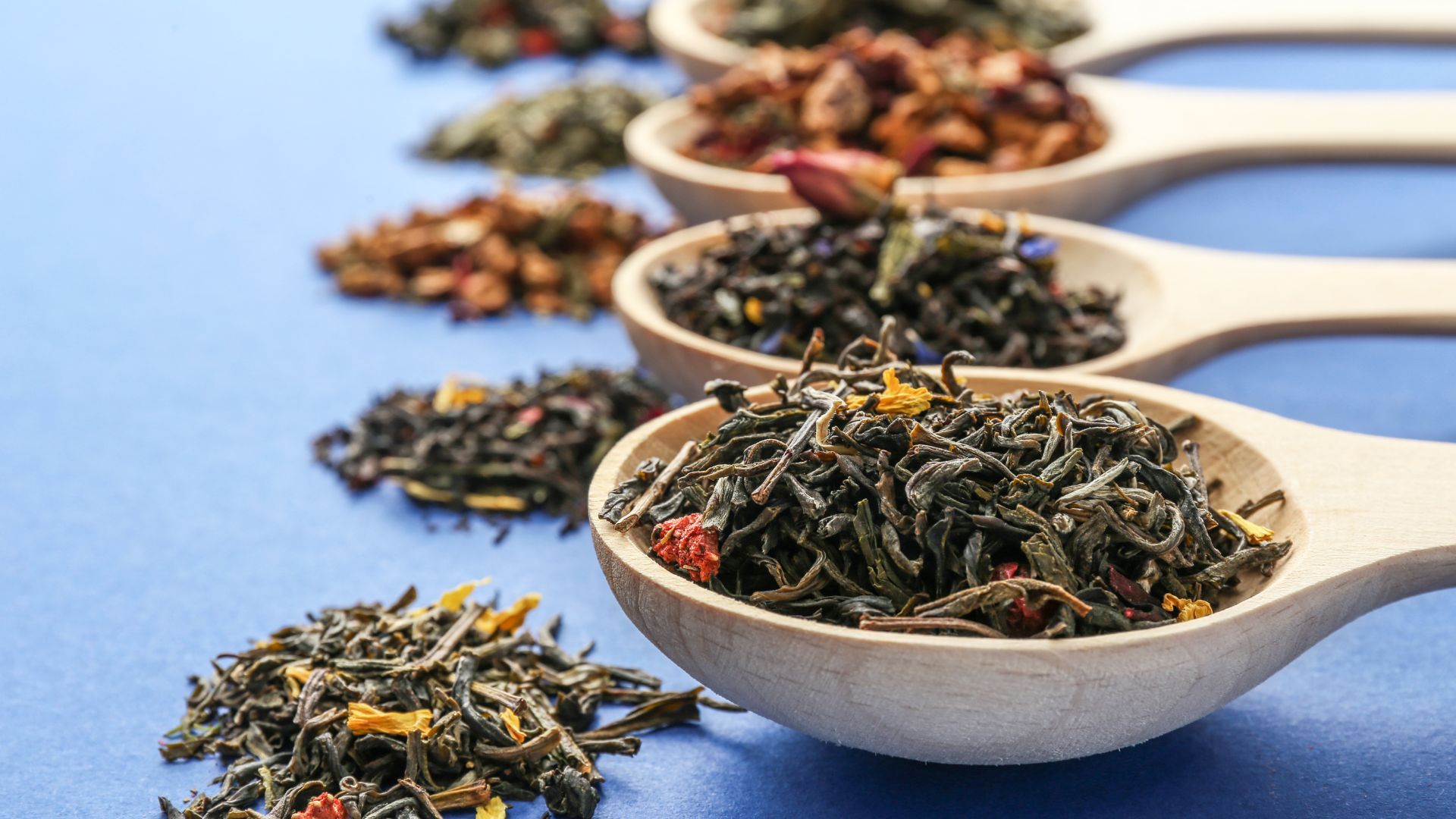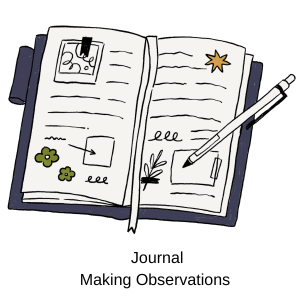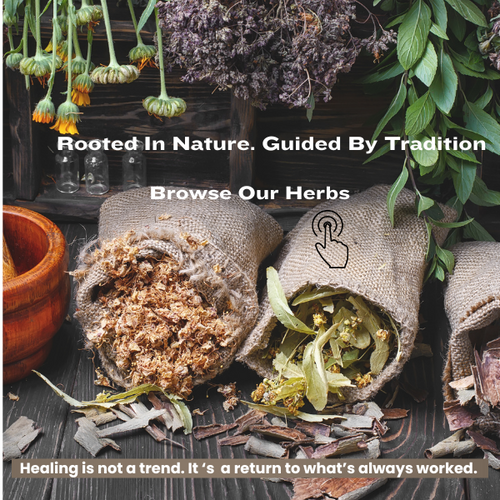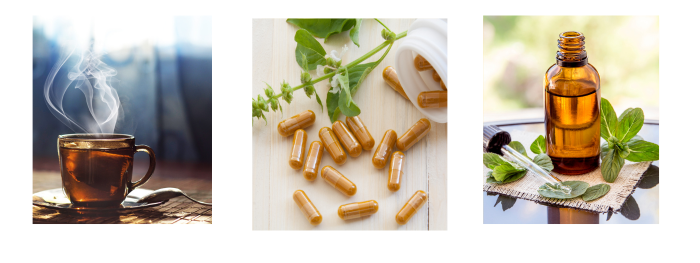From Roots To Remedies: The Cultural Traditions Behind Herbal Healing.
Mar 31st 2025
From Roots To Remedies: The Cultural Traditions Behind Herbal Healing.
Herbs have been part of human history for thousands of years—woven into the fabric of spiritual rituals, healing ceremonies, food preparation, and daily life. From ancient Chinese medicine to Native American healing, from African rootwork to European folk remedies, herbal traditions represent some of the deepest, most enduring connections between humans and the natural world.
Today, as more people seek natural alternatives to synthetic products, we are witnessing a powerful return to the wisdom of the past. Yet, while herbal trends surge in popularity, many consumers are left wondering:
Where do these herbs come from? Are they effective? Are they safe? And how do I even begin using them?
This blog will explore the timeless traditions of herbal healing across cultures, what modern consumers are searching for but rarely find, and how returning to herbal roots can provide powerful support for your health and wellbeing.
 Herbal Traditions Across the World
Herbal Traditions Across the World
Traditional Chinese Medicine (TCM)
Chinese herbalism dates back over 2,500 years, rooted in Taoist philosophy. Herbs are categorized by energy (hot, cold), flavor (sweet, bitter, pungent), and organ systems they support. Classic formulas like Liu Wei Di Huang Wan or Ban Lan Gen blend multiple herbs for synergistic healing.
Ayurveda (India)
One of the world's oldest healing systems, Ayurveda uses herbs like ashwagandha, tulsi, and triphala to balance the body’s doshas (Vata, Pitta, Kapha). Herbs are combined with oils, spices, and rituals to promote longevity and vitality.
Western Folk Herbalism
Rooted in Greco-Roman, Celtic, and indigenous European practices, Western herbalism includes herbs like chamomile, burdock, nettle, and echinacea. Historically used by wise women and apothecaries, these herbs were passed down through oral tradition.
African and Afro-Caribbean Herbal Traditions
Herbs in African healing systems are deeply spiritual. Plants like moringa, neem, and graviola are used for purification, energy, protection, and deep healing. Rootwork, hoodoo, and spiritual baths reflect the sacred connection between herbs and spirit.
Native American Healing Systems
Native American healers used herbs such as sweetgrass, sage, yarrow, and wild cherry bark for physical and spiritual healing. The knowledge was intimately tied to seasonal rhythms, ceremony, and community wisdom.
Cultural Comparison of Key Herbs
| Culture | Key Herbs | Common Uses |
|---|---|---|
| TCM | Reishi, Ban Lan Gen | Aids iin Immunity, respiratory, calming the spirit |
| Ayurveda | Turmeric, Tulsi | Supports Inflammation, digestion, mental clarity |
| Western | Chamomile, Echinacea | Benefits Sleep, cold/flu, stress |
| Native American | Sage, Yarrow | Provides Cleansing, fever, wounds |
| African | Moringa, Neem | Supports Blood cleansing, skin health, energy |
 How to Begin Your Herbal Journey: A Simple Guide to Using Traditional Herbs
How to Begin Your Herbal Journey: A Simple Guide to Using Traditional Herbs
Getting started with herbal healing doesn’t have to feel overwhelming. Traditional herbs have been used for centuries, often in simple, daily ways—through tea, food, ritual, and gentle remedies passed from generation to generation. Here's a step-by-step guide to help you ease into herbal use with confidence and clarity.
1. Start with One Herb That Matches Your Current Health Need
There is absolutely no reason to overwhelm yourself. Just keep it simple.
Instead of buying a dozen herbs at once, choose just one herb that supports a specific area of your health. Ask yourself:
-
Do I need help sleeping?
-
Am I looking for digestive support?
-
Do I need help managing stress or energy levels?
Examples:
-
For stress: Science-backed information states:Start with ashwagandha or lemon balm
-
For digestion: Try peppermint or ginger
-
For sleep: Begin with chamomile or valerian
Starting with one herb helps you learn how your body responds without overwhelming yourself.
2. Use Simple, Time-Tested Methods
You don’t need fancy tools or complex formulas. Begin with one of the following traditional methods:
-
Tea (Infusion): Steep dried herbs in hot water—ideal for calming, digestive, or sleep support
-
Tincture: A concentrated herbal extract taken in drops, great for convenience and potency
-
Infused Oil: Use herbs infused in carrier oils for skin, massage, or topical use
These are gentle, effective, and easy to integrate into your daily routine.
Review our How To Use Herbs Page
3. Incorporate Herbs into Your Lifestyle
Herbalism is more than supplements—it’s a way of living in rhythm with nature. Try integrating herbs into:
-
Your meals: Add fresh or dried herbs to soups, smoothies, or teas
-
Baths or body care: Use calming herbs like lavender, rose, or calendula in a warm soak
-
Daily rituals: Sip herbal tea during meditation, journaling, or prayer
This deepens your connection to the herb beyond physical use—it becomes a relationship.
 4. Track Your Experience in a Journal
4. Track Your Experience in a Journal
Every body is different. Keep a simple journal to note:
-
When you take the herb
-
How you feel afterward (energy, digestion, mood, etc.)
-
Any side effects, improvements, or patterns
Over time, this creates a personalized log of what works best for you—and helps you stay mindful in your healing journey.
5. Seek Guidance from a Trained Herbalist or Practitioner
If you’re dealing with a chronic health issue, taking medications, or simply want more personalized advice, connect with:
-
A clinical herbalist
-
A Traditional Chinese Medicine (TCM) practitioner
-
An Ayurvedic doctor
-
A naturopathic doctor with herbal training
Professional guidance ensures you’re using herbs safely, effectively, and in alignment with your overall health goals.
Final Thought
Herbal healing is both an art and a science—rooted in tradition, powered by nature, and refined by personal experience. Start simply. Be consistent. Stay curious. And remember, every great herbalist once began with just one plant.
Why Tradition Matters in Herbal Healing
Tradition is more than just a record of the past—it’s a living thread that connects us to something deeper: to the Earth, to our ancestors, to healing that is rooted not just in the body, but in the soul.
When you begin to explore herbs through the lens of tradition, something changes. The leaves, roots, flowers, and barks you once saw as ingredients become symbols of resilience, wisdom, and sacred care. You begin to understand that every herb carries a story—not just of its biochemical effects, but of how it’s been cherished, used, and passed down through generations.
Tradition brings context to how herbs were used, purpose to why they were prepared in specific ways, and wisdom to how they can support healing on every level—physical, emotional, and spiritual.
Consider These Timeless Examples:
-
Chamomile, known today as a gentle tea for relaxation, was revered in ancient Egypt. It was offered to the gods, used to soothe fevers, and believed to carry protective energy that calmed both the body and the spirit.
-
In Traditional Chinese Medicine, Reishi mushroom (Ling Zhi) is called the “Mushroom of Immortality.” It is not just taken for immunity or longevity—it is honored as a spiritual tonic that nourishes Shen, the heart-mind. It was reserved for sages and seekers pursuing clarity, calm, and enlightenment.
-
In Ayurveda, turmeric is not only a culinary staple or anti-inflammatory powerhouse. It is part of sacred rituals, wedding ceremonies, and spiritual cleansings. It is viewed as a purifier of both body and spirit—a bridge between the physical and divine.
These are not just herbs. These are living teachers.
And according to the Shennong Bencao Jing—one of the world’s oldest herbal texts—plants like Reishi were considered treasures of the earth, not for their pharmacology alone, but for their ability to connect us with Heaven and Earth. This reverence matters.
When You Learn Tradition, You Connect with More Than Just a Remedy
You connect with:
-
The wisdom of your ancestors
-
The ceremony of healing
-
The rhythm of the natural world
-
The unseen forces that modern science cannot always explain
In a world of quick fixes and commodified wellness, tradition is grounding. It reminds us that healing is not a transaction. It's a relationship—with nature, with ourselves, and with a lineage of wisdom that honors the whole person.
So when you choose to learn about herbs through their traditional use—not just what they do, but how they’ve been used—you step into something sacred. Something ancient. Something that still works.
This is why at 1stChineseHerbs.com we don’t just sell herbs. We share their stories, their roots, and the rituals that make them whole again.
Modern Myths About Traditional Herbs — And the Truth You Should Know
As interest in herbal healing grows, so does misinformation. While more people are exploring natural medicine, there are still several persistent myths that create confusion—and sometimes even fear. Let’s take a closer look at some of the most common modern myths about traditional herbs and uncover the truth behind them.
❌ Myth #1: Herbal Remedies Aren’t Backed by Science
✅ Truth: Many herbs not only have thousands of years of historical use but are also supported by modern clinical research.
While herbal medicine may be rooted in ancient traditions, modern science has increasingly validated what traditional healers have known for centuries. Herbs like turmeric, ashwagandha, ginkgo biloba, echinacea, and milk thistle have been the subjects of numerous clinical trials and pharmacological studies.
For example:
-
Turmeric (Curcuma longa): Shown to reduce inflammation and support joint health in multiple human studies.
-
Ashwagandha (Withania somnifera): Proven to reduce stress, balance cortisol levels, and support thyroid health.
In fact, many pharmaceuticals are derived from plant compounds originally used in folk medicine. The truth is, science and tradition can work hand in hand when herbal medicine is approached with both respect and research.
❌ Myth #2: All Herbs Are Safe for Everyone
✅ Truth: Herbs are powerful and must be used with care. Like any form of medicine, safety depends on the dosage, preparation, individual constitution, and interactions with other medications or conditions.
Herbs are often perceived as gentle or harmless because they’re natural. However, natural doesn’t always mean risk-free. Just as you wouldn’t take a pharmaceutical without understanding the proper dosage or potential side effects, herbs deserve the same respect.
Key considerations:
-
Licorice root can raise blood pressure if taken long-term or in high doses.
-
St. John’s Wort may interfere with birth control pills and antidepressants.
-
Comfrey is effective topically but can be harmful to the liver when taken internally in large amounts.
That’s why it’s crucial to source herbs from trusted suppliers, use correct preparation methods, and—when in doubt—consult a trained herbalist or integrative health provider.
❌ Myth #3: Traditional Medicine Is Outdated or Obsolete
✅ Truth: Traditional herbal systems like Traditional Chinese Medicine (TCM), Ayurveda, Native American medicine, and Western folk herbalism are still widely practiced around the world—and often inform modern wellness and functional medicine today.
Far from being obsolete, these systems offer a holistic perspective on health that is often missing in modern medicine. They don’t just treat symptoms; they look at root causes, energetics, seasonal rhythms, and the person as a whole.
In fact:
-
TCM is integrated into hospitals in China.
-
Ayurvedic medicine is a government-recognized healthcare system in India.
-
Western integrative practitioners often incorporate herbal protocols based on these traditional systems.
Modern herbalism is evolving, not disappearing. Today’s practitioners often combine traditional wisdom with modern science, offering the best of both worlds.
The Bottom Line
Traditional herbs are not outdated, ineffective, or dangerous when used correctly. They are part of a living legacy of healing—refined through generations and now validated by research. Understanding the facts helps you make empowered, safe, and effective choices for your health.
Conclusion: From Roots to Remedies
Herbs are more than supplements. They are stories. They are ancestors. They are tradition and transformation.
As you explore herbal wellness, remember: the knowledge has always been there. You just need a guide who respects it.
And that’s what we offer. A return to nature, a connection to tradition, and a path toward wellness that is rooted, grounded, and real.
Want to Begin Your Herbal Journey?
Start with our Beginner’s Guide to Herbal Use


